A classic book on the subject of lost Pacific Ocean continents was originally published in 1931 and entitled, Lemuria The Lost Continent of the Pacific. The author’s name on the cover is “Wishar S. Cerve,” who is also known as “H. Spencer Lewis,” was the founder of the Ancient and Mystical Order of the Rosae Crucis (Rosicrucians) in the United States and it’s first Imperator from 1915 to 1939.
I found, in contrast with the works of my great-grandfather, that this book provides no references, or so it seems. In James Churchward’s books, names of famous authors and scientists, as well as scholarly books are dropped in support of the points in the narrative, however in Lemuria…, a passage near the front of the book relates that all the sources are listed together in an appendix. James’ first book was written in 1926 Lost Continent of Mu Motherland of Men with Lost Continent of Mu and Children of Mu following in 1931. The table below shows some of the similarities between the references. Note that the complete list of James Churchward’s references are not listed below, but are provided in Lifting the Veil on the Lost Continent of Mu Motherland of Men. Note that the version of Lemuria… used has a printed date of 1975.
| Lemuria… Appendix II |
Churchward |
| The researches and writings of Dr. Augustus le Plongeon | Augustus le Plongeon is frequently quoted in the Lost Continent of Mu Motherland of Men and other books |
| Records of the Mayan people in Yucatan | Codex Cortesianus & Troano Manuscript (2 parts of the Madrid Codex) quoted in the Lost Continent of Mu Motherland of Men and other books |
| The records of William Niven, archaeologist | the 2500 of the 2600 total tablets drawings that William Niven sent to James. Quoted in the Children of Mu and other books after 1926. |
| The records of Dr. Morley of the Carnegie Institute | – |
| The Codex Cortesianus, a Mayan book written 5,000 years ago from temple records and which can be found in some institutions of learning. | Codex Cortesianus (1 part of the Madrid Codex) [as above] |
| Manava Dharma Sastra, an ancient Hindu book | Quoted in the Lost Continent of Mu Motherland of Men (same quote as from Queen Moo and the Egyptian Sphinx by le Plongeon [page 9]) |
| The writings of Lao-Tse | Lao-Tse is quoted in Lost Continent of Mu Motherland of Men and other books |
| The writings of H.T. Colebrook concerning his researches in Asia | Colebrooke is not referenced directly, however le Plongeon’s quotes from Colebrooke are contained in James’ books (unattributed.) |
| The records of researches of Professor Ellis in Polynesia | Rev. William Ellis is referenced in Lost Continent of Mu Motherland of Men with unattributed quote from Queen Moo and the Egyptian Sphinx by le Plongeon [page 74]) |
| The Egyptian Book of the Dead | A whole chapter in Lost Continent of Mu Motherland of Men(1926) and Lost Continent of Mu(1931) on the Book of the Dead |
| A study of the history of the Inca people and the Quiches. | James references the Popol Vuh in the Lost Continent of Mu Motherland of Men and other books. |
| The researches of Leonard V. Dalton in Venezuela | – |
| Researches at Easter Island | Quotes Te Pito Te Henua or Easter Island by William J. Thompson in Lost Continent of Mu Motherland of Men and other books |
| Plutarch‘s Life of Solon | Life of Solon is quoted in the Lost Continent of Mu Motherland of Men and other books. |
| The researches of Dr. Henry Schliemann | Heinrich Schliemann is quoted in Lost Continent of Mu Motherland of Men (as well as his self identified grandson, Peter.) |
| The papyrus rolls from Egypt to be found in the museum in the city formerly known as St. Petersburg, Russia. | – |
| Osborn‘s book, Men of the Old Stone Age | – |
| The excavations at Yucatan and various parts of Central America. | Chapter 12 of Lost Continent of Mu Motherland of Men is entitled “YUCATAN’S PLACE AMONG THE ANCIENT CIVILIZATIONS” |
| Richard Curle‘s book, Wonders of the Past | – |
| The writings of Valmiki, the ancient Hindu historian | Valmiki is quoted in Lost Continent of Mu Motherland of Men and other books |
| The book of Manu, containing ancient Hindu writings | The Book of Manu is quoted in Children of Mu and other books. Note that it is the same book as the Manava Dharma Sastra previously mentioned. |
| E.H. Parker‘s book on China | E.H. Parker is quoted in Children of Mu |
| Captain Cook‘s records of his trip around the world in 1770. | – |
The National Geographic Magazine:
|
– |
| Atlantean Research – Official organ of the Research Center group. This group is headed by Egerton Sykes, and part of the activity is devoted to research on the subject of the continent of Atlantis. In 1948, Mr. Sykes headed an expedition to the Atlantic to test scientifically some of the theories advanced regarding the submerged continent. In the publication abovementioned, a series of articles under the heading “Atlantis: The Atlantic Continent and Its Submersion,” appeared in 1948 by Dr. Rene Malaise. (ed. the Atlantis Research Center was formed in 1945) | – |
| The Atlantis Myth, by H. S. Bellamy [ed. book published in 1948] | – |
| The Rosicrusian records and historical writings | – |
| The records of the Essenes, and hundreds of others | – |
At the bottom of the list printed in Appendix II of Lemuria… is the following:
The publishers cannot attempt to give information by correspondence as to where the foregoing books and others can be found by readers desiring them. Most of these books can be found in the larger of the principal libraries throughout the world. but any librarian or large publishing house will attempt to get these books for any reader or will state where and how they may be secured.

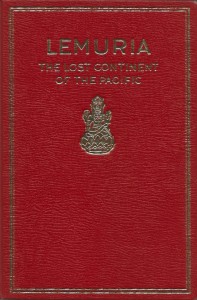

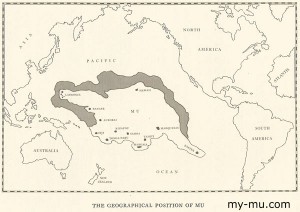
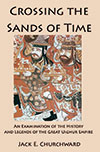
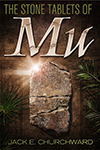
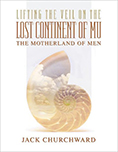



 RSS - Posts
RSS - Posts